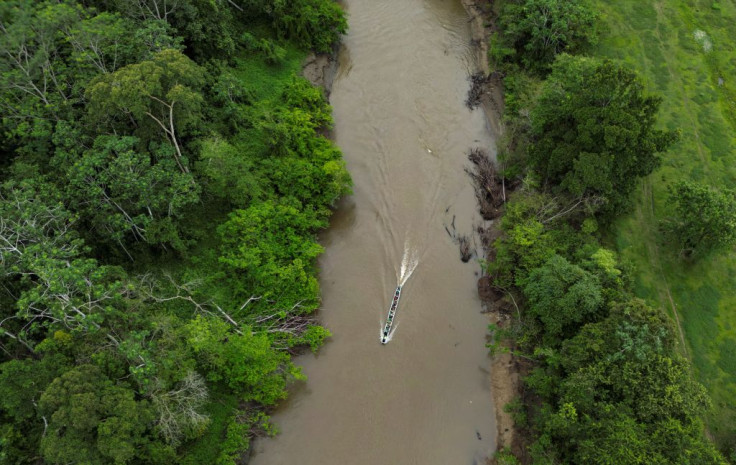
The Panamanian government closed in March the Darien Gap, the jungle path used by hundreds of thousands of migrants over the past years to make their way to the U.S., after traffic plummeted as a result of President Donald Trump's immigration crackdown.
Now, the Central American government wants the Trump administration to help clean up the rainforest connecting Colombia and Panama, with officials saying that those crossing left a significant trail of contamination.
Panamanian Environment Minister Juan Carlos Navarro said the area is now experiencing an acute environmental disaster, with the area now filled with sewage, plastic trash and even human bones.
Over a million migrants crossed through the Darien Gap since 2016 until Panamanian President Jose Raul Mulino closed the path in March. According to Mulino, the number of people crossing through the region en route to the United States has dropped by 98% in the last year. Some migrants are even using the route in reverse, returning to their home countries.
The Darién Gap has primarily been traversed by Venezuelans fleeing economic collapse, as well as Colombians, Ecuadorians, and even migrants from distant nations such as Vietnam, Afghanistan, and the Democratic Republic of the Congo.
The treacherous passage from Colombia was long controlled by paramilitary groups profiting from smuggling operations, charging migrants approximately $350 each to cross. Many have died along the way due to river surges, criminal violence, and exposure to the harsh jungle environment.
Numerous NGOs and UN agencies assisted in providing shelter, clean water, and food. The influx of migrants also had a profound impact on local Indigenous communities, particularly the Emberá people, who relied on transporting migrants by boat and offering lodging and food for income, as El País reports. The closure of the route represents a severe economic setback for these communities.
As reported by Axios, using data collected by Migración Panama and reviewed by the human rights advocacy group Washington Office on Latin America, only 408 migrants traveled northward through the jungle in February, compared to nearly 82,000 in August 2023.
Reports from March detailed that smugglers are now using maritime routes to return migrants to their home countries. Migrants typically travel by boat to the Colombian town of Capurganá, avoiding the dangerous terrain altogether.
Gardi Sugdub, an island previously known for housing Panama's first climate refugees, has now become a key stop for those waiting for southbound transport. Migrants pay $10 per day for lodging, though conditions remain poor, with limited access to potable water and electricity.
© 2025 Latin Times. All rights reserved. Do not reproduce without permission.





